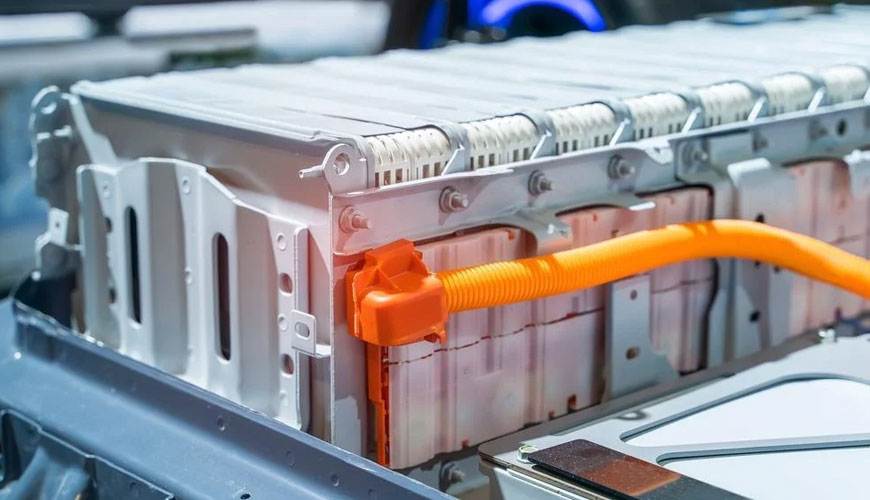

The European standard “EN 62281:2017 Safety of primary and secondary lithium batteries and batteries during transport” describes test methods and requirements to ensure the safety of primary and secondary (rechargeable) lithium batteries and batteries during transport, other than recycling or destruction. In cases where the special provisions given in the relevant regulations mentioned in this standard provide exemption, the requirements described in this standard are not applied.

Different standards may apply for lithium-ion battery systems used in electrically powered road vehicles.
The following important technical changes have been made in the latest revision of this standard:
For the purposes of this standard,
Lithium-ion is one of the most widely used materials in secondary batteries. Lithium-ion secondary batteries are charged or discharged by lithium-ion absorption and desorption between positive and negative active substances. These batteries mainly consist of a positive electrode, negative electrode, electrolyte and separator. It consists of electrolyte, lithium salt and organic solvents. Commonly used positive electrode active materials include lithium cobalt oxides, lithium iron phosphate, lithium manganese, and the like. Commonly used negative electrode active materials include graphite, amorphous carbon, lithium titanate, and the like.
The battery capacity of the lithium ion battery depends on how many lithium ions can be discharged by the positive electrode active material and how much discharged lithium ion can be received by the negative electrode active material. Therefore, the key to the high capacity of lithium-ion secondary batteries is how many positive and negative electrode active materials can be placed per unit volume.
The energy density of the battery refers to the amount of electrical energy released per unit volume or mass of a battery. Generally, under the same volume, the energy density of a lithium-ion battery is 2,5 times that of a nickel cadmium battery and 1,8 times that of a nickel hydrogen battery. Therefore, under the condition of equal battery capacity, a lithium-ion battery is smaller in volume and lighter in weight than nickel cadmium and nickel hydrogen batteries.
Among the numerous test, measurement, analysis and evaluation studies given to businesses by our organization, there are also testing services within the framework of the "EN 62281:2017 Safety of primary and secondary lithium batteries and batteries during transportation".
To get an appointment, to get more detailed information or to request an evaluation, you can ask us to fill in our form and reach you.